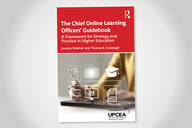You have /5 articles left.
Sign up for a free account or log in.
“Originally, pigeonhole had only a literal meaning: a small recess or compartment for a domestic pigeon to roost or nest in, usually as part of a pigeon ‘loft’ or coop. That term has been around since at least 1577. A little over a century later, in 1688, the term was also applied to similar small compartments built into desks or bookshelves for storing or sorting mail, papers or writing supplies.
A third meaning, first recorded in 1864, and the one you most often hear today, is a ‘narrow, sometimes oversimplified category.’ Used as a verb, it’s the act of placing someone in such a category (among actors, it’s also called type casting). The consensus among etymologists is that this usage comes from the original pigeonhole being extended metaphorically, with the meaning that the category the person or thing is being assigned to is as narrow and confined as a literal pigeonhole is.”
From “What Is a Pigeonhole?” by Matt Soniak, Mental Floss, Dec. 2, 2012
The world of digital learning is amazing. There is no end of challenges in working at the intersection of technology and education. But does the word “digital” in digital learning pigeonhole the work and the people in it?
The resistance to the possibilities and opportunities of new pedagogical models often comes from its association with technology. One of the biggest hurdles digital learning professionals confront is getting people over their apprehensions about the role technology can play.
Despite the fact that much of what we consider traditional approaches to teaching and learning leverage certain kinds of technologies to which we’ve long become accustomed (books, chalkboards, electric lights, etc.), there is still a palpable bias against technology and its role in learning.
This becomes even more complicated when we consider digital technologies. Despite the advantages digital technologies offer for things like active and adaptive learning, distance education, simulations, peer learning, and information delivery, they are still often seen as interlopers into the learning experience.
If this is true with the role of technology in the teaching and learning dynamic, what does this mean for the digital learning folks who research, develop and advocate for the role of technology on campus?
Are they, too, pigeonholed?
Does the digital in their titles make their role as experts in learning invisible? Does our bias against the digital obscure the potential for impacting learning?
We hope not.
Digital learning leaders have had to walk that line between aligning with the existing institutional mission and practices while simultaneously finding opportunities to push educational practices beyond the status quo.
We actually think this is a good thing.
We think this dynamic creates a particular kind of agility in thinking and practice that higher education needs more of as it adapts to the economic, cultural and political challenges it’s facing.
Today’s digital learning leaders may have ideas about how institutions can evolve and adapt that are grounded in their experience in digital learning but go beyond the boundaries of this field.
The path to most senior academic leadership roles seems to run primarily through a traditional academic career, but perhaps there is room for a greater variety of paths, one that recognizes the importance of flexibility and agility in thinking about the future of higher education while maintaining a clear-eyed focus on learning.
Will we start to see the highest ranks of campus leaders occupied by those academics who have cut their teeth in areas such as online education, faculty development and professional and continuing studies?
Do we have examples from other nontraditional academic leaders -- academic librarians come to mind -- who have made the leap out of digital learning to campuswide leadership roles?
What should today’s digital learning leaders be doing to avoid being pigeonholed as only being eligible for positions in digital learning?




